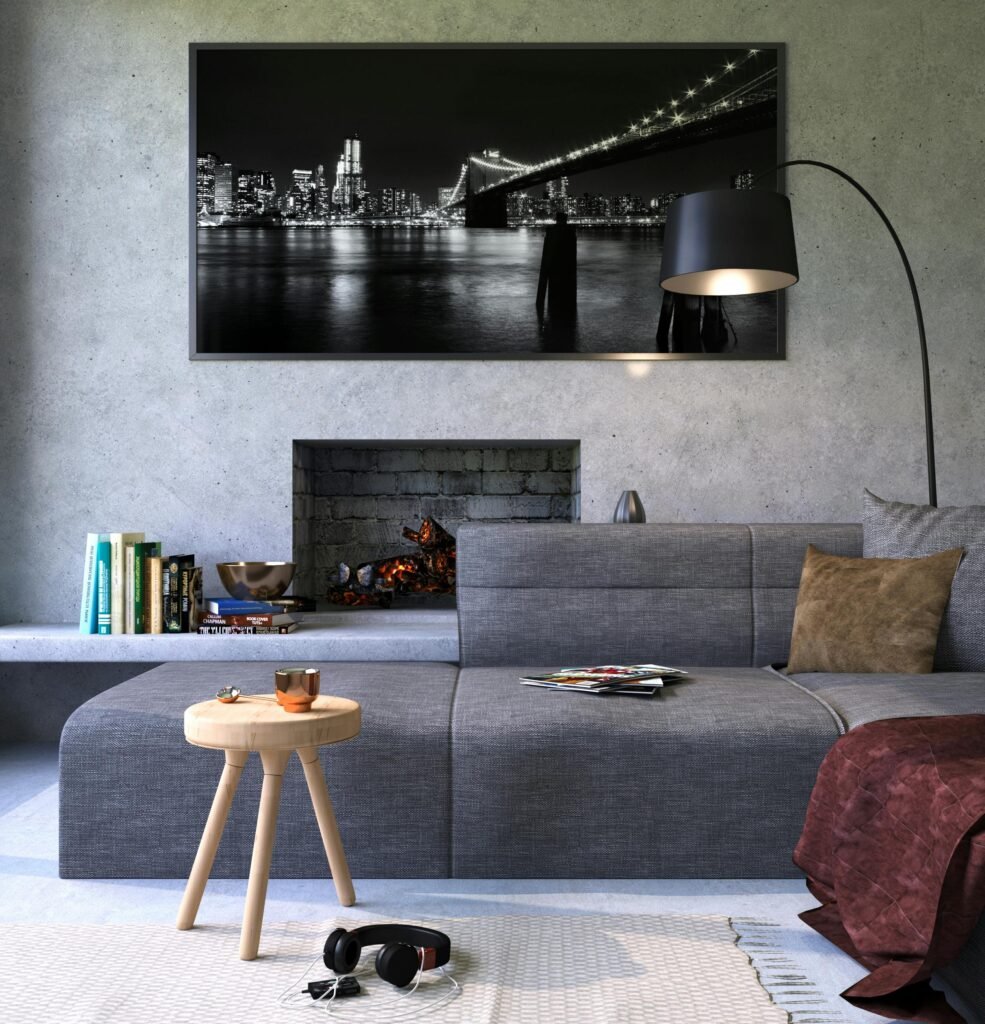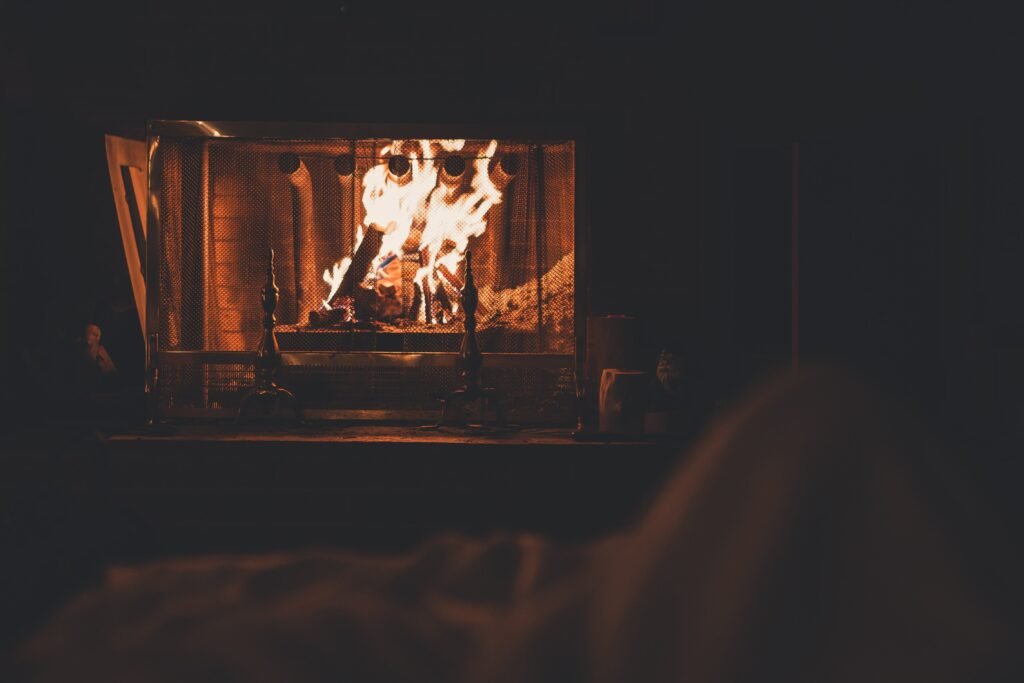Imagine sitting by a warm and crackling fireplace, the soft glow illuminating the room as you relax with a book or enjoy the company of loved ones. Fireplaces have a unique ability to create a cozy and inviting atmosphere in any home. But have you ever wondered how to keep this beloved feature in top-notch condition? In this article, we will unveil the secrets of chimney champions and explore the essential techniques for maintaining your fireplace. From cleaning and inspection to prevention of common issues, you’ll discover everything you need to know to keep your fireplace pristine and ensure those delightful moments by the fire continue for years to come. So, grab a cup of tea, get comfortable, and let’s dive into the world of fireplace maintenance.
Importance of Fireplace Maintenance
Preventing Chimney Fires
Maintaining your fireplace and chimney is of utmost importance to prevent chimney fires. Over time, soot and creosote can build up inside the chimney. Creosote is a highly flammable substance that can ignite easily and cause a dangerous chimney fire. Regular maintenance and cleaning can help remove the buildup of creosote, reducing the risk of a fire outbreak.
Improving Indoor Air Quality
A properly maintained fireplace and chimney can greatly improve the indoor air quality of your home. When the chimney is not functioning optimally, smoke, carbon monoxide, and other harmful gases may not be effectively vented out of your home. This can lead to a buildup of pollutants in the air, which can be detrimental to your health. Regular maintenance helps ensure that your chimney is free from blockages and operating efficiently, keeping the indoor air clean and safe to breathe.
Ensuring Efficient Heating
A well-maintained fireplace and chimney not only provide warmth and coziness but also ensure efficient heating in your home. When the chimney is clean and free from any obstructions, the airflow is improved, allowing the fire to burn more effectively. This results in better heat output and a more efficient heating system overall.
Understanding Chimney Anatomy
Firebox and Hearth
The firebox is the area in the fireplace where the fire is lit and contained. It is usually made of fire-resistant materials such as bricks or metal. The hearth refers to the floor area in front of the fireplace, which is made of a non-combustible material. The firebox and hearth are important components of the fireplace structure, providing a safe and stable foundation for the fire.
Flue and Smoke Chamber
The flue is the passage in the chimney that allows smoke and gases to escape from the fireplace. It is usually lined with flue tiles or stainless steel. The smoke chamber is the area above the firebox where the smoke and gases gather before being directed into the flue. Understanding the flue and smoke chamber is crucial in maintaining proper airflow and preventing smoke from escaping into your home.
Chimney Cap and Spark Arrestor
The chimney cap is a protective covering that sits on top of the chimney. It serves as a barrier against rain, snow, and other debris, preventing them from entering the chimney. Additionally, chimney caps often have spark arrestors, which help prevent sparks and embers from landing on your roof and potentially causing a fire.

This image is property of images.pexels.com.
Signs of Chimney Damage
Deteriorating Bricks or Mortar
One of the most common signs of chimney damage is deteriorating bricks or mortar. Over time, exposure to moisture, extreme weather conditions, and the intense heat of fires can cause the bricks and mortar to deteriorate. This can lead to weakened structural integrity, which may result in a collapse or other costly repairs if left untreated.
Cracked Flue Tile
Another sign of chimney damage is cracked or damaged flue tiles. Flue tiles are designed to protect the chimney structure from the high temperatures and corrosive chemicals produced by the fire. When these tiles crack or become damaged, they can affect the chimney’s ability to effectively vent smoke and gases, potentially leading to a buildup of dangerous fumes in your home.
Rust or Damage to Chimney Cap
Inspecting the chimney cap is essential as it is constantly exposed to the elements. Over time, rust can develop, weakening the structure and allowing water to seep into the chimney. Additionally, damage to the chimney cap, such as dents or missing pieces, can compromise its effectiveness in keeping out debris and preventing pests from entering the chimney.
Creosote Build-up
Creosote buildup is a common problem in chimneys and can be a sign of chimney damage. Creosote is a black, tar-like substance that accumulates inside the chimney as a result of burning wood. If not regularly cleaned, creosote can greatly increase the risk of chimney fires. Regular inspections and cleanings are necessary to remove this highly flammable substance and ensure the safety of your home.
Chimney Cleaning Techniques
Tools and Equipment Needed
Before you begin cleaning your chimney, it’s important to gather the necessary tools and equipment. These may include a chimney brush, extension rods, a vacuum cleaner, dust masks, goggles, gloves, and a drop cloth to protect your surroundings from debris.
Safety Precautions
Chimney cleaning can be a dirty and potentially hazardous task, so taking safety precautions is crucial. Make sure to wear appropriate protective gear, such as dust masks, goggles, and gloves, to protect yourself from the soot and debris. Additionally, using drop cloths or tarps to cover the surrounding area will help minimize the mess. It’s also advisable to secure a sturdy ladder to access the roof safely.
Step-by-Step Cleaning Process
- Before cleaning the chimney, make sure to close the damper to prevent any debris from falling into the fireplace.
- Use a vacuum cleaner with a nozzle attachment to remove any loose soot and debris from the firebox and smoke shelf.
- Attach the chimney brush to the extension rods and carefully insert it into the chimney from either the roof or the fireplace, depending on the accessibility.
- Use a twisting motion to scrub the chimney walls thoroughly, working your way from the bottom to the top.
- Continue brushing and extending the rods until you have reached the top of the chimney.
- Once you have finished scrubbing, use the vacuum cleaner again to remove any remaining debris or soot from the firebox and smoke shelf.
- Dispose of the collected debris in a sealed bag and clean up any mess that may have occurred during the process.
Professional Cleaning Services
While it is possible to clean your chimney yourself, it is often recommended to hire professional chimney cleaning services. Professional chimney sweeps have the knowledge, experience, and specialized tools to thoroughly clean your chimney and identify any potential issues. They can also provide valuable advice on maintenance and optimal functioning of your fireplace.

This image is property of images.pexels.com.
Inspecting and Repairing Chimney
Importance of Regular Inspections
Regular chimney inspections are essential to identify any potential issues or damage that may need repair. A professional chimney inspector can assess the condition of the chimney, including the bricks, mortar, flue tiles, chimney cap, and overall structural integrity. Detecting and addressing any chimney damage early on can save you from costly repairs or even a dangerous chimney fire.
Identifying and Fixing Cracks
Cracks in the chimney can occur due to age, weathering, or extreme temperature changes. These cracks can compromise the structural integrity of the chimney and increase the risk of water intrusion or chimney fires. Professional chimney technicians can identify and address any cracks by repairing the damaged areas, ensuring the longevity and safety of your chimney.
Replacing Damaged Flue Tiles
If the flue tiles in your chimney have cracks, damage, or deterioration, it is important to have them replaced. Damaged flue tiles can hinder the proper ventilation of smoke and gases, leading to a build-up of harmful fumes in your home. An experienced chimney professional can safely remove the damaged tiles and replace them with new ones, restoring the efficiency of your chimney.
Repairing or Rebuilding Chimney Crown
The chimney crown is the concrete or masonry slab that covers the top portion of the chimney. It acts as a protective barrier against water intrusion and helps prevent damage to the chimney structure. If the chimney crown is cracked or damaged, water can seep into the chimney, causing further deterioration and potential structural issues. Repairing or rebuilding the chimney crown is crucial to maintaining a structurally sound and water-resistant chimney.
Installing or Replacing Chimney Cap
If your chimney cap is damaged, rusted, or missing, it is important to have it replaced. The chimney cap serves as a barrier against debris, pests, and water, preventing them from entering the chimney. Additionally, a chimney cap often includes a spark arrestor, which helps prevent sparks and embers from landing on your roof and potentially causing a fire. A professional chimney service provider can install or replace the chimney cap, ensuring the safety and functionality of your chimney.
Preventive Measures
Using Proper Wood
Using the right type of wood is important for maintaining a clean and efficient fireplace. Hardwoods, such as oak or maple, burn longer and produce less creosote compared to softwoods like pine or spruce. It’s best to use seasoned wood that has been dried for at least 6-12 months to ensure efficient burning and minimize the buildup of creosote.
Regular Ash Removal
Regularly removing the accumulated ash from the firebox is essential for maintaining a clean and efficient fireplace. Excess ash can restrict airflow and hinder the fire’s ability to burn properly. It’s important to wait until the ashes have completely cooled down and then carefully scoop them out using a shovel or ash vacuum. Properly disposing of the ash in a metal container with a tight-fitting lid is crucial to prevent accidental ignition.
Using Fire Screens
Using fire screens or spark guards is an effective way to prevent sparks and embers from escaping the fireplace and potentially causing a fire hazard. Fire screens act as a barrier, allowing heat and light to pass through while ensuring that sparks and embers remain inside the fireplace. This not only adds an extra layer of safety but also helps keep the surrounding area clean and free from debris.
Keeping the Area Clear
Maintaining a clear area around the fireplace is important for both safety and efficient operation. Ensure that there are no flammable materials or objects, such as furniture, curtains, or rugs, located near the fireplace. Keep a safe distance between the fire and any combustible materials to prevent accidental ignition. Additionally, ensuring proper ventilation in the room by keeping doors and windows slightly open can help maintain good airflow and prevent the buildup of smoke inside your home.
Avoiding Over-firing
Over-firing the fireplace by burning excessive amounts of wood can cause stress on the chimney system, leading to accelerated deterioration and potential safety hazards. It’s important to follow the manufacturer’s guidelines or consult a professional for the recommended fuel load and burn times for your specific fireplace. Avoiding over-firing and maintaining moderate fire sizes will help ensure the longevity and safety of your fireplace.

This image is property of images.pexels.com.
Maintaining a Clean Fireplace
Removing Ash and Debris
Regularly removing ash and debris from your fireplace is essential to maintain a clean and efficient system. After allowing the ashes to cool completely, carefully scoop them out using a shovel or an ash vacuum. Dispose of the ash in a metal container with a tight-fitting lid to prevent accidental ignition. Additionally, cleaning out any debris, such as twigs or leaves, from the firebox will help prevent airflow restrictions and ensure proper burning.
Cleaning the Firebox
Cleaning the firebox involves removing any loose debris, ash, or soot that may have accumulated. To clean the firebox, use a stiff brush or a fireplace shovel to loosen and remove the debris. Once the loose debris is removed, use a vacuum cleaner or a dustpan and brush to gather any remaining ash or soot. Wipe down the surfaces of the firebox with a damp cloth to remove any stubborn residue. Regularly cleaning the firebox will help maintain a clean and visually appealing fireplace.
Removing Soot and Creosote
Soot and creosote are natural byproducts of burning wood in a fireplace. Over time, these substances can build up on the internal surfaces of the chimney, potentially leading to chimney fires if not regularly removed. Using a chimney brush, as mentioned in the chimney cleaning techniques section, is an effective way to remove soot and creosote from the chimney walls. Regular cleanings by a professional chimney sweep will ensure that these substances are removed to maintain the safety and efficiency of your fireplace.
Sweeping the Hearth
The hearth, the area in front of the fireplace, is often prone to accumulating dust, debris, and ashes. Regularly sweeping the hearth with a broom or using a vacuum cleaner with a brush attachment will help keep it clean and free from unwanted materials. Additionally, wiping down the hearth with a damp cloth can help remove any stubborn stains. A clean and well-maintained hearth not only enhances the visual appeal of your fireplace but also ensures a clean and safe environment.
Improving Fireplace Efficiency
Using Energy-Efficient Fireplace Inserts
Installing energy-efficient fireplace inserts can greatly improve the efficiency and heating capabilities of your fireplace. Fireplace inserts are designed to fit into existing fireplaces and provide a more controlled and efficient burn. They help reduce heat loss, increase heat output, and improve overall energy efficiency. Additionally, fireplace inserts often come with features such as blowers or fans, which help circulate warm air throughout the room.
Sealing Air Leaks
Air leaks in and around the fireplace can significantly decrease its efficiency by allowing warm air to escape and cold air to infiltrate your home. Sealing these air leaks is important to optimize the performance of your fireplace. Use appropriate sealants, such as high-temperature silicone caulk or fireplace sealant, to seal any gaps or cracks in the fireplace, chimney, or surrounding areas. This will help prevent heat loss and ensure that the warm air generated by the fireplace stays inside your home.
Insulating the Chimney
Insulating the chimney is another effective way to improve the efficiency of your fireplace. Chimney insulation helps prevent heat loss by reducing the amount of warmth that escapes through the chimney system. Insulation materials, such as chimney liners or insulating blankets, can be installed in the flue to create a barrier against heat transfer. This not only helps improve the performance of your fireplace but also minimizes cold drafts and increases energy efficiency.
Safety Measures and Precautions
Installing Carbon Monoxide Detectors
Carbon monoxide (CO) is a silent and deadly gas that can be produced by fireplaces and other fuel-burning appliances. It is essential to install carbon monoxide detectors in your home, especially in areas near fireplaces. Carbon monoxide detectors will alert you if there is a buildup of this dangerous gas, giving you valuable time to evacuate and seek help. Regularly test and replace the batteries in these detectors to ensure they are always in proper working condition.
Keeping Fire Extinguishers Handy
Having fire extinguishers readily available is crucial for emergency situations. In the event of a small fire outbreak, a fire extinguisher can help contain and extinguish the flames before they spread. Make sure to have a fire extinguisher near the fireplace and in other strategic locations throughout your home. Familiarize yourself with how to properly use a fire extinguisher and ensure that it is regularly inspected and serviced.
Maintaining Proper Ventilation
Maintaining proper ventilation in the room where the fireplace is located is important for both safety and indoor air quality. Proper ventilation allows for the proper flow of air and the elimination of smoke, gases, and other combustion byproducts. Keep doors and windows slightly open to provide a source of fresh air and ensure that the room does not become overly smoky or oxygen-deprived. Additionally, consider installing a carbon monoxide detector to provide an extra layer of safety against potential hazards.
Professional Chimney Services
Benefits of Hiring Professional Chimney Sweeps
Hiring professional chimney sweeps offers numerous benefits for maintaining a safe and efficient fireplace. These experts possess the knowledge, experience, and specialized tools to thoroughly clean and inspect your chimney. They can identify and address any potential issues, such as cracks, blockages, or structural damage. Additionally, professional chimney sweeps can provide valuable advice on maintenance, proper fireplace usage, and appropriate cleaning techniques.
When to Call for Professional Inspection
It is advisable to schedule a professional chimney inspection at least once a year. However, there are certain circumstances that warrant immediate professional attention. If you notice any signs of chimney damage, such as crumbling bricks, excessive creosote buildup, or a damaged chimney cap, it is important to call for a professional inspection as soon as possible. Additionally, if you have recently experienced a chimney fire or any major weather-related events, it is crucial to have your chimney inspected to assess any potential damage or safety issues.
Choosing a Reliable Chimney Service Provider
When choosing a chimney service provider, it is important to select a reliable and reputable company. Look for professionals who are certified by organizations such as the Chimney Safety Institute of America (CSIA) or other relevant industry associations. These certifications signify that the chimney technicians have undergone training and adhere to the industry standards. Additionally, read customer reviews, seek recommendations from trusted sources, and inquire about warranties or guarantees offered by the service provider.




